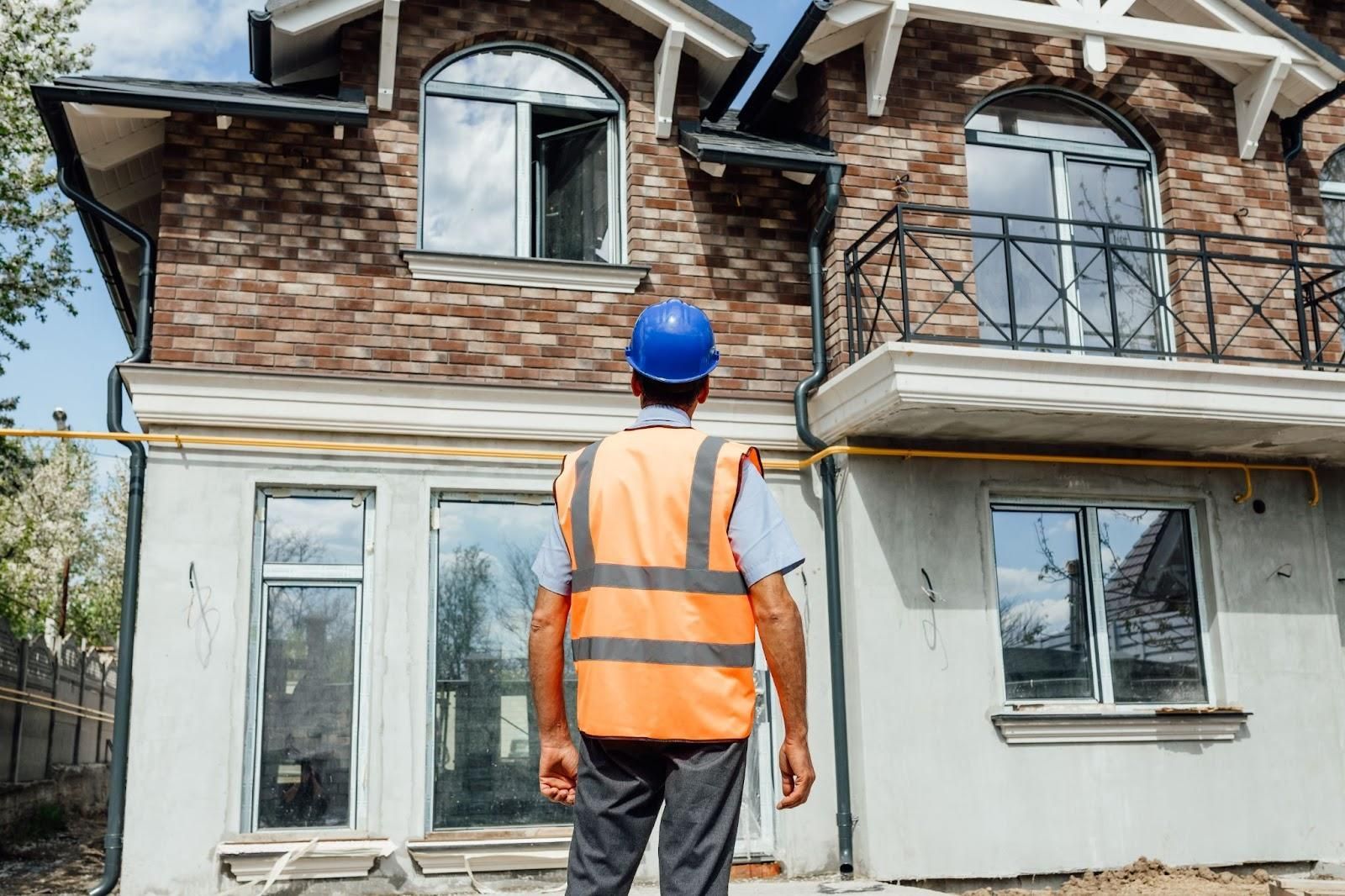What are ADA Inspection Costs and Pricing Factors? See Answers Here
It's understandable that ADA inspection costs can feel a bit daunting for property owners. It's totally normal to have some questions and worries about what to expect during the evaluations, which can lead to a bit of confusion. But don’t worry! Getting a good grip on the pricing factors can really help you budget effectively and make sure you stay on track with those important accessibility standards.
At Accurate Home and Commercial Services, we understand that navigating ADA inspections can be a bit daunting. That’s why we’re here to take the hassle out of the process for you! With our friendly team dedicated to reliable and clear assessments, we strive to make your inspection experience smooth and straightforward. We want you to focus on what really matters—making your spaces accessible for everyone. By breaking down the details of ADA inspections, we’re here to help you feel informed and confident in your decisions. Let’s work together to create welcoming environments!
What are ADA Inspections?
ADA inspections check properties for compliance with the Americans with Disabilities Act to ensure accessibility for individuals with disabilities. These inspections identify access barriers and suggest modifications.
Key areas evaluated during inspections include:
- Parking Facilities: Checking for accessible designated spaces.
- Building Entrances: Ensuring automatic doors and compliant ramps.
- Interior Spaces: Assessing pathways, restrooms, and service counters.
Costs of ADA inspections depend on:
- Property Size: Larger properties cost more due to time and resources needed.
- Layout Complexity: More complex designs require thorough evaluations.
- Location: Prices vary by region due to market differences.
Understanding ADA Inspection Costs
ADA inspection costs vary depending on several key factors. Familiarity with these elements helps property owners in Greater Houston budget effectively for compliance assessments.
Breakdown of Typical Costs
ADA inspection costs typically encompass fees for the inspector's time, report generation, and potential follow-up visits. Costs may also include expenses for necessary tools and travel, especially for inspections in more remote locations. Property owners can expect varying charges based on service complexity and inspector experience. Generally, hiring a licensed professional ensures compliance with ADA standards, adding value to the inspection process.
Factors Influencing Pricing
Factors influencing pricing include
- Property size,
- Layout complexity, and
- Geographic location.
Larger properties often require more extensive evaluations, contributing to higher costs. Complex layouts may necessitate additional time and resources for thorough inspections. Geographic location affects costs based on local market rates and accessibility issues.
Selecting a seasoned inspection service like Accurate Home and Commercial Services contributes to reliable assessments tailored to specific needs. Prioritizing these factors ensures a comprehensive understanding of ADA compliance costs.
Key Pricing Factors in ADA Inspections

Several factors influence pricing in ADA inspections. Understanding these factors ensures accurate budgeting for property owners.
Location and Accessibility
Location significantly impacts ADA inspection costs. Urban areas typically have higher service rates due to demand and cost of living. Accessibility issues unique to specific locations may also require more in-depth evaluations. Property owners in regions with stringent local regulations might face increased costs for compliance assessments. Selecting a provider familiar with the area's accessibility landscape enhances the inspection's reliability and compliance.
Building Size and Complexity
Building size and complexity play a crucial role in determining inspection costs. Larger buildings usually require extended evaluations, demanding more time and resources from inspectors. Complex architectural features may introduce additional barriers that necessitate thorough assessments. Property owners must consider these aspects when planning inspections to ensure adequate allocation of budget and resources.
Type of Inspection Required
The type of inspection needed affects pricing as well. Comprehensive assessments, such as those evaluating multiple compliance aspects, may incur higher fees than standard inspections. Specialized inspections targeting specific accessibility requirements can also lead to varied costs. Identifying the specific needs of the property allows for more accurate pricing and effective planning for ADA compliance measures.
Cost Comparison: DIY vs. Professional Inspections
DIY inspections might save money upfront, but they often lack thoroughness. Inspectors assess compliance with standards that require expertise in understanding the complexities of the Americans with Disabilities Act. Homeowners may overlook critical areas or misinterpret regulations, leading to costly rework later.
Professional inspections provide a different experience. Certified inspectors possess specialized training and extensive knowledge, ensuring compliance with ADA regulations. They assess parking facilities, building entrances, restrooms, and pathways comprehensively.
Inspection costs include fees for expert assessment and detailed report generation. Professionals may charge for their time, travel, and any additional follow-up visits required. While initial costs may be higher, the thoroughness of professional inspections often results in long-term savings by avoiding potential legal penalties and enhancing accessibility compliance.
Consider the potential pitfalls of DIY methods. Homeowners risk oversights that could lead to additional expenses and remediation efforts. Relying on professionals ensures adherence to all local codes and standards. Accurate Home and Commercial Services stands out as a licensed and insured provider in the Greater Houston area, offering reliable ADA inspection services that prioritize legal compliance and accessibility.
Property owners wanting assurance in their inspections benefit significantly from choosing professional services. The confidence in receiving accurate evaluations justifies the investment, ultimately proving more cost-effective than opting for a DIY route.
Conclusion
Navigating ADA inspection costs can be daunting for property owners. Understanding the various pricing factors is essential for effective budgeting and compliance. By opting for professional services like Accurate Home and Commercial Services, property owners can ensure thorough evaluations that meet ADA standards. This investment not only promotes inclusivity but also helps avoid potential legal issues down the line. Ultimately, prioritizing accessibility can lead to a more welcoming environment for all while providing peace of mind regarding compliance.
Frequently Asked Questions
What is an ADA inspection?
ADA inspections assess properties for compliance with the Americans with Disabilities Act. They evaluate key areas such as parking, entrances, restrooms, and pathways to ensure accessibility for individuals with disabilities.
Why are ADA inspection costs confusing?
ADA inspection costs can vary widely based on several factors, including property size, layout complexity, and geographic location. Understanding these variables helps property owners budget effectively.
What factors affect ADA inspection costs?
Key factors include the property's size and complexity, location, and the type of inspection required. Larger or more complex buildings often incur higher costs due to detailed evaluations.
How can Accurate Home and Commercial Services help?
Accurate Home and Commercial Services offers expert ADA inspections, simplifying the evaluation process for property owners. Their experienced team ensures thorough and reliable assessments for compliance.
Are DIY ADA inspections viable?
While DIY inspections can save money, they typically lack thoroughness and expertise. This can lead to overlooking critical issues, resulting in costly rework and potential legal penalties.
Why choose professional inspections over DIY?
Professional inspections provide extensive knowledge and specialized training, ensuring compliance with ADA regulations. Though initial costs may be higher, they lead to long-term savings and greater peace of mind.











